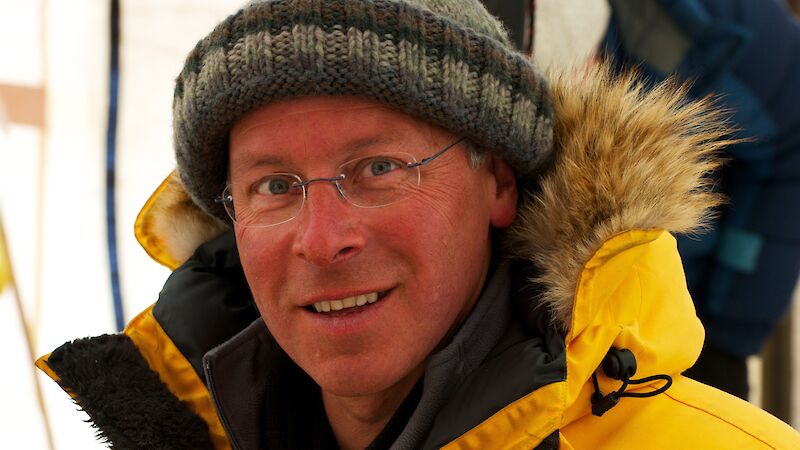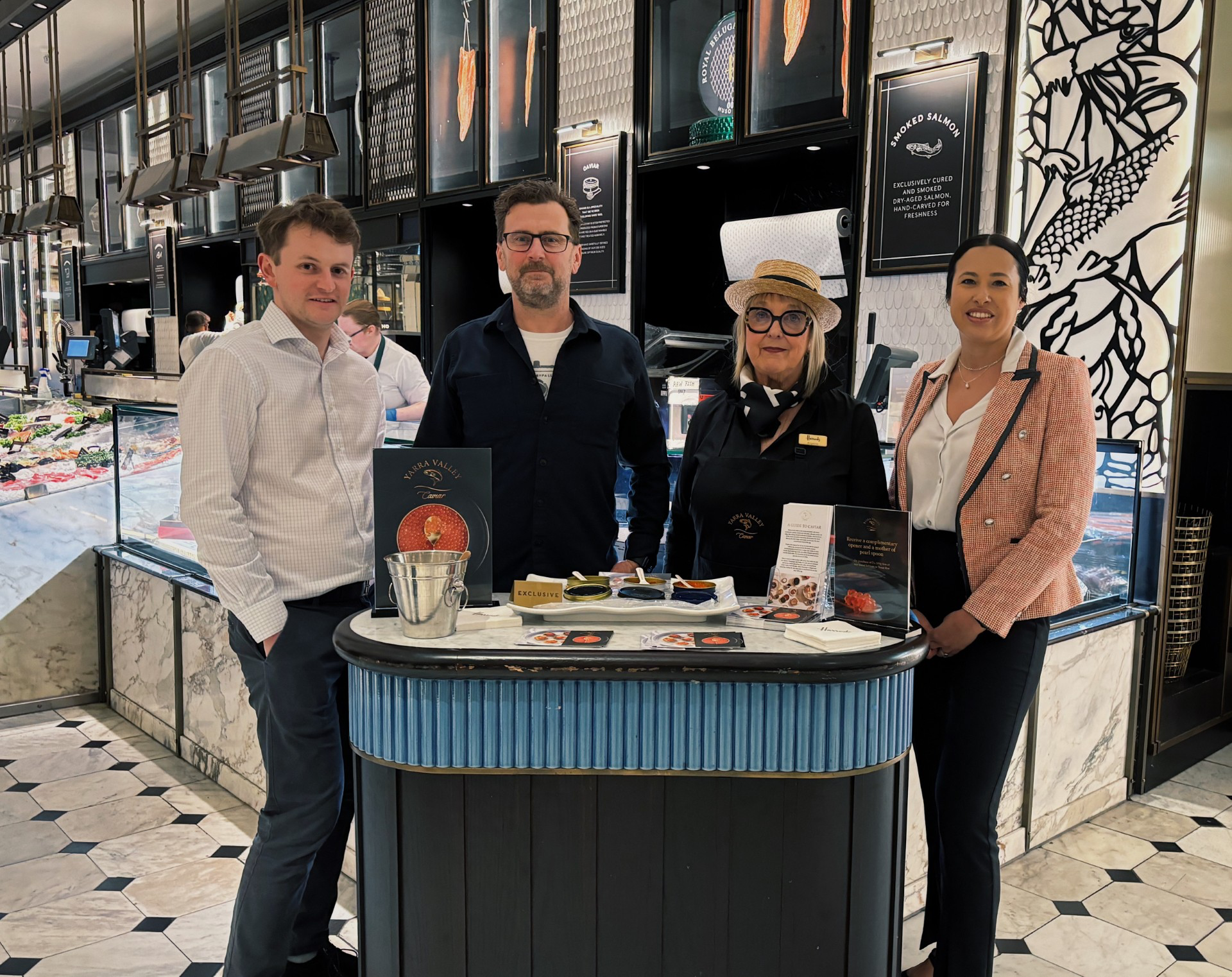After 29 years, the leader of Australia’s Antarctic Climate program is hanging up his ice drill.
“We’ve just built an airport!”
Admiring the view of a two kilometre-long ski-runway with his deep-field Antarctic colleagues, it was an unexpected achievement for climate scientist Dr Tas van Ommen, in late 2013.
Tas and a small team of Australians and French had spent the past two weeks traversing the windswept Antarctic icecap, to a site called Aurora Basin, 550 kilometres from the nearest station, to set up for an ice core drilling camp.
The runway would allow for an international team, led by Australia, to fly to the site a few days later and drill more than 500 metres of ice containing a climate record dating back 2000 years.
“Two thousand years gives us a nice long period to look at the climate, before human interference began with the emission of carbon dioxide into the atmosphere,” Tas said at the time.

Ice cores contain gases, particles and other chemical elements that are trapped in snow as it falls and compacts to form ice. This chemistry provides information about the temperature under which the ice formed, storm events, solar and volcanic activity, sea ice extent, and the concentration of different atmospheric gases over time.
As well as its scientific value, Aurora Basin was a reconnaissance operation for a more ambitious future goal, to drill an ice core with a one million year climate history. Such a core will help solve a long-standing mystery in climate science.
Stellar beginnings
Looking back on his 29 year career with the Australian Antarctic Division, it’s clear Tas has never been one to shrink from a challenge.
As a self-confessed “science geek” growing up on the north-west coast of Tasmania, Tas said his best chance to get into the profession was to do a teacher studentship, to help pay his way through university.
A serious car accident delayed his studies, and his life, for a year, but he eventually completed an Honours degree in radio astronomy and a Diploma in teaching.
“I spent a year teaching in Launceston but it wasn’t my natural habitat,” he said.
“However, the training was pivotal in my later career because it taught me to think about my audience and to always be prepared.”
Tas returned to the University of Tasmania to complete a PhD looking at pulsars (a type of star), using the radio telescopes at Cambridge (Tasmania) and Parkes (New South Wales) – dramatized in the movie The Dish.
“After that I got a job with NASA’s Jet Propulsion Laboratory, using their Deep Space radio telescope to measure distant objects beyond the Milky Way galaxy,” he said.
“It was an exciting place to work, but Los Angeles wasn’t really my natural habitat either.”
After 18 months he returned to Tasmania and applied for an “odd job doing something with ice cores”.
“I didn’t know a lot about ice cores, but I sold myself in the application as a good physicist,” he said.
While he was waiting for an interview, coincidentally, his future mentor and colleague, eminent Antarctic physicist and glaciologist, Dr Vin Morgan, appeared.
“Vin was giving a lecture at the Launceston museum on the Law Dome ice core. So I went along, and that was where I found out what I was going to do for the rest of my career,” Tas said.
Halcyon years
Tas moved to Hobart in 1994 to take up the position as a glaciologist at the Australian Antarctic Division, alongside Vin Morgan.
It was perfect timing, as drilling of a 1200 metre-long ice core from Law Dome had just been completed. The core provided a climate record extending back 90,000 years, and many years of scientific analysis and discovery that continue today.
“They were good, productive years where we were churning through the ice core, but it meant that I had no need to go to Antarctica for the first 10 years of my employment,” Tas said.
The core gave Tas one of the highlights of his career, when its chemistry revealed a link between snowfall at Law Dome, and rainfall – or more specifically drought – in Western Australia.
“When we looked at long term meteorological records of south-west Western Australian rainfall, we saw low winter rainfall when the snowfall at Law Dome was high,” Tas said.
“It was apparent that there were large scale weather systems in the Southern Ocean that connect Western Australia and Law Dome, and that was probably one of my most important findings.”
Through this discovery Tas and his team have been able to identify the likely underlying role that climate change plays in the long-term drought in Western Australia, with significant implications for water catchment management in Western Australia.
“The Law Dome core was good to me. It came at the right time,” Tas said.
ICECAP
Also well timed was an unexpected conversation with University of Texas geophysicist Dr Don Blankenship in 2007, at the start of the International Polar Year. Dr Blankenship proposed a collaboration to fly line surveys across Antarctica, mapping the bedrock on which the ice sheet sits.
“I put the proposal to our Director, Tony Press, as a great idea for the International Polar Year and he said ‘make it happen’,” Tas said.
Dr Press’s support led to an international collaboration called ICECAP that continues today. Over 11 seasons the team has mapped more than 700,000 line-kilometres.
The mapping data has revealed that large parts of the East Antarctic ice sheet sits on bedrock below sea level. Much more than anyone had anticipated.
“If you look at all the ice sheet modelling work that’s gone into the Intergovernmental Panel on Climate Change reports, and countless papers beside, they all rest on understanding the bedrock, and the ICECAP work is fundamental to this in East Antarctica,” Tas said.
“I’m proud we got ICECAP up and running, and again it was a case of being in the right spot at the right time.”
Antarctic connections
In October 2004 Tas had his first opportunity to ‘go south’ on icebreaker Aurora Australis.
“I can still remember being on the bridge at night, with the lights out in front as we nudged through the pack ice, with snow falling overhead. I was caught then,” he said.
Since then he has been on six research expeditions and seven VIP flights to Wilkins Aerodrome, using his teaching experience to explain the importance of Antarctica to climate change research.
“It’s really important to build connections between researchers and policy- and decision-makers. You can see the penny drop when you show them an ice core and explain what you do. We can still avoid a lot of the misery of climate change if we can get the policy traction we need,” he said.
Icy grail
In the past decade Tas and his team have turned their attention to what’s considered the ‘holy grail’ of ice core science – an ice core with a climate history of more than one million years.
Among other things, this record will help scientists understand why almost one million years ago, the cycle of ice ages shifted from a regular 41,000 year cycle to an ice age every 100,000 years.
A leading theory is that declining atmospheric CO2 levels were the cause of the longer, colder ice ages. The million year ice core record will provide the essential CO2 record to test this theory.
The work of ICECAP and at Aurora Basin had indicated that Little Dome C, about 1200 km from Casey research station, would likely have such old ice. But to get there, Australia needed to reinvigorate its traverse capability.
“Aurora Basin taught us that you can’t do big inland activities without surface travel,” Tas said.
Last season Australia’s first heavy traverse in 20 years navigated a route to Little Dome C and established a site for drilling to commence at the end of 2023.
So how does Tas feel about leaving as a new chapter in climate science is beginning?
“I’m thrilled with the team we have to carry on this work. We have excellent people setting it up for scientific success, and we have a remarkable group doing an incredible job on the traverse,” he said.
Tas will continue in his role as co-chair of the International Partnership in Ice Core Science and on the advisory board for the European effort to drill a million year ice core – happening in tandem with Australia’s efforts.
But he will miss his colleagues.
“For a guy who started out being mad keen on anything scientific, I learned that what really matters is doing stuff with people,” he said.
“That communal achievement, in deep-field Antarctica and on station, was the best.”







